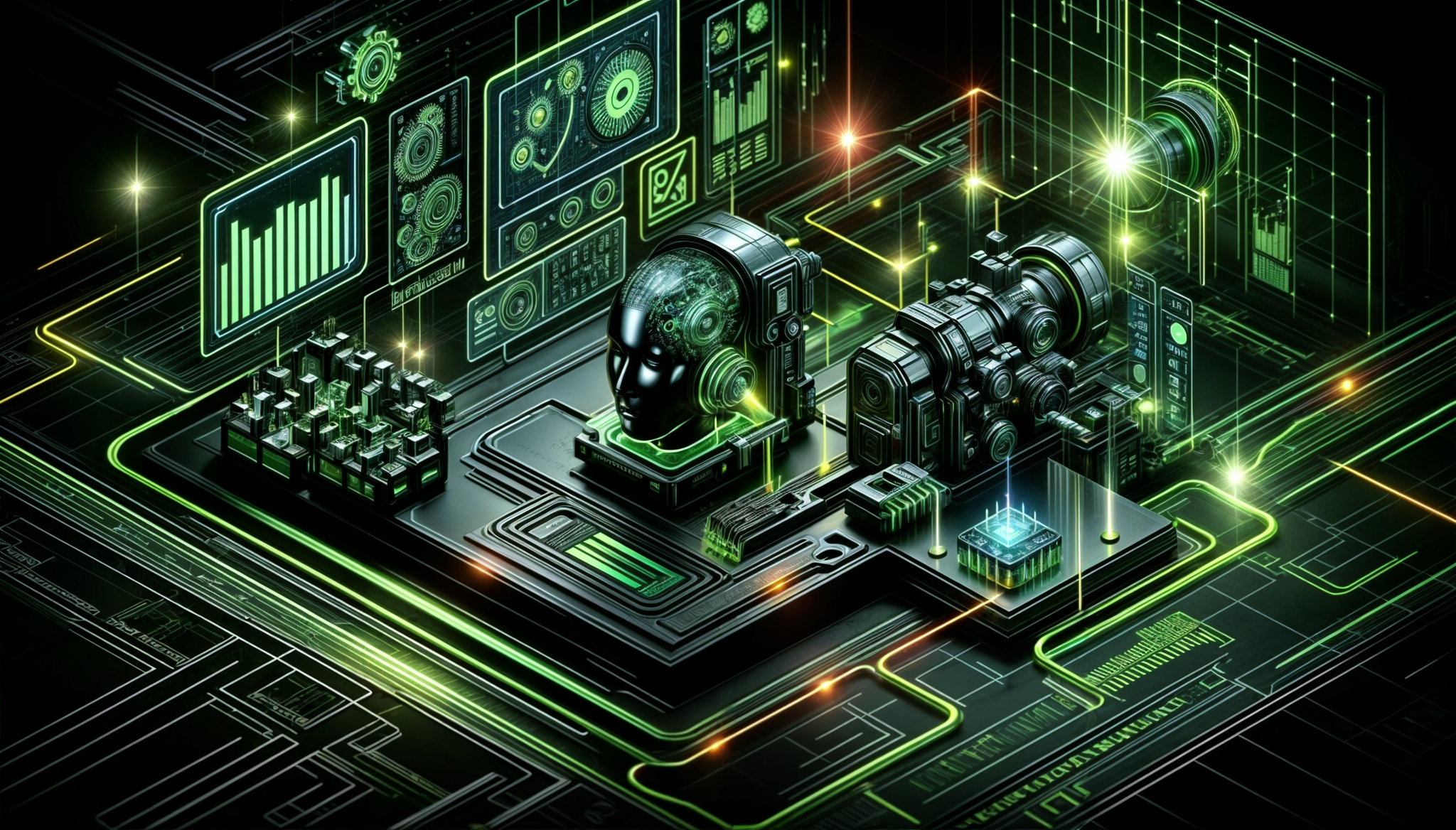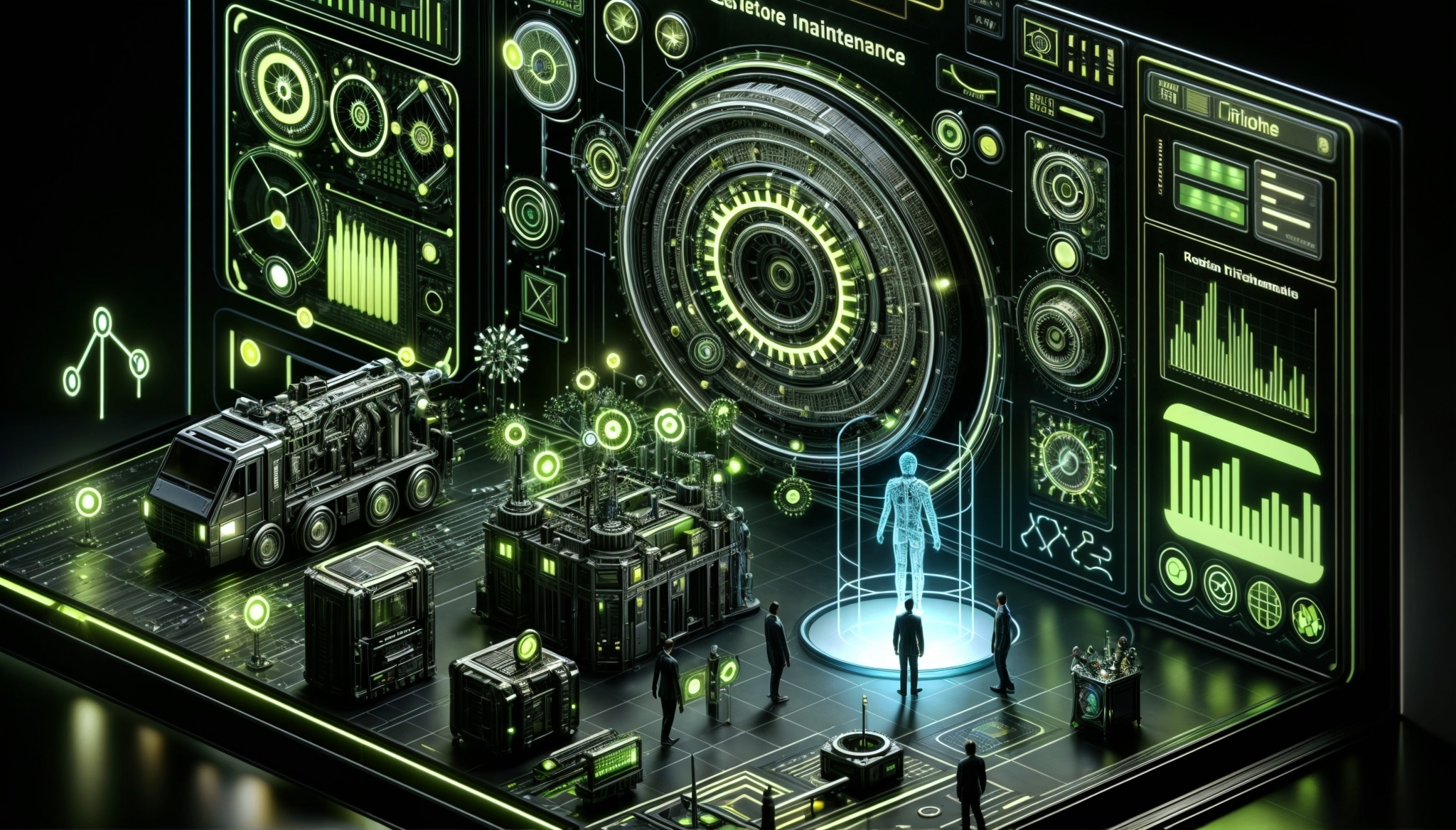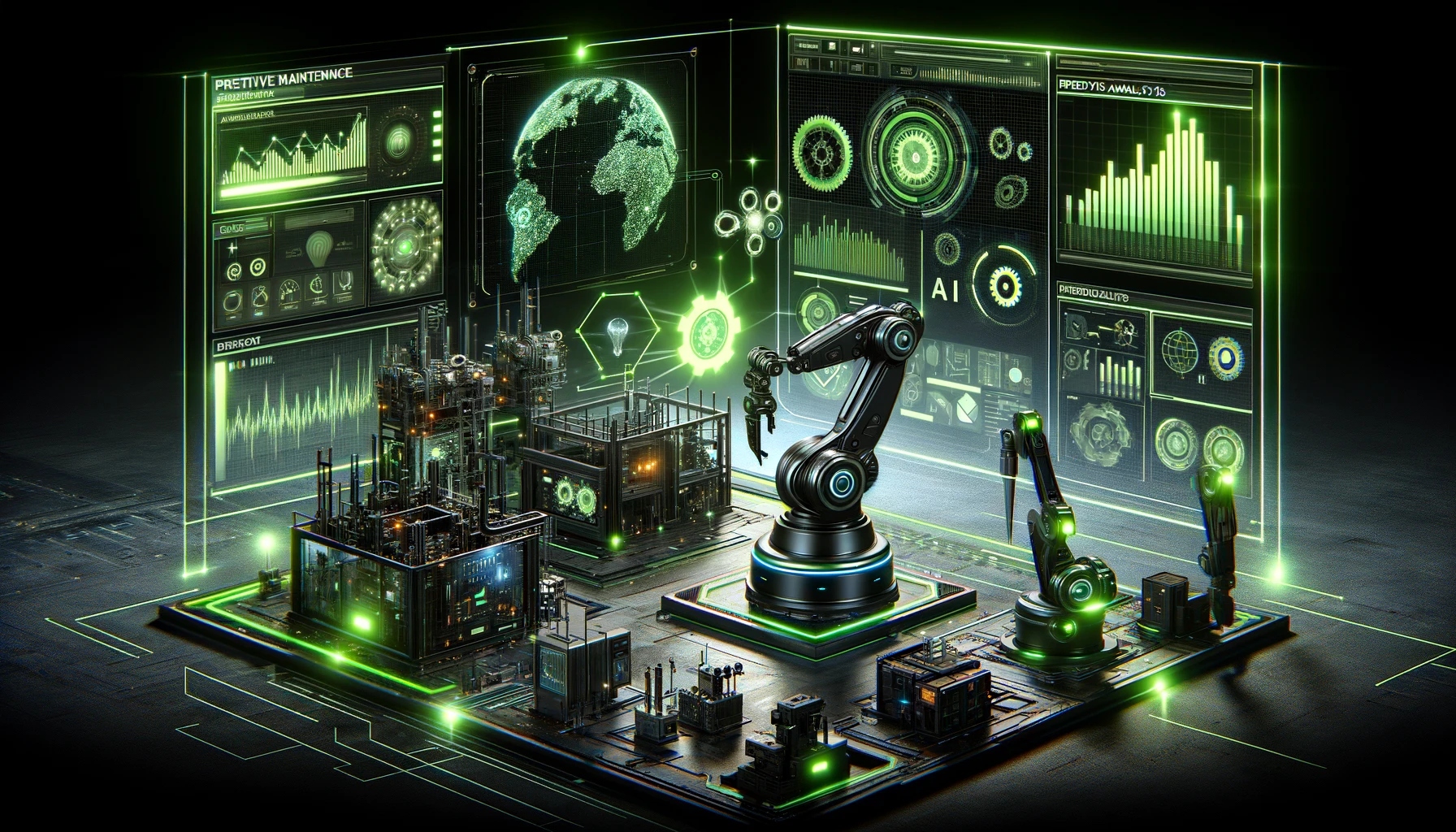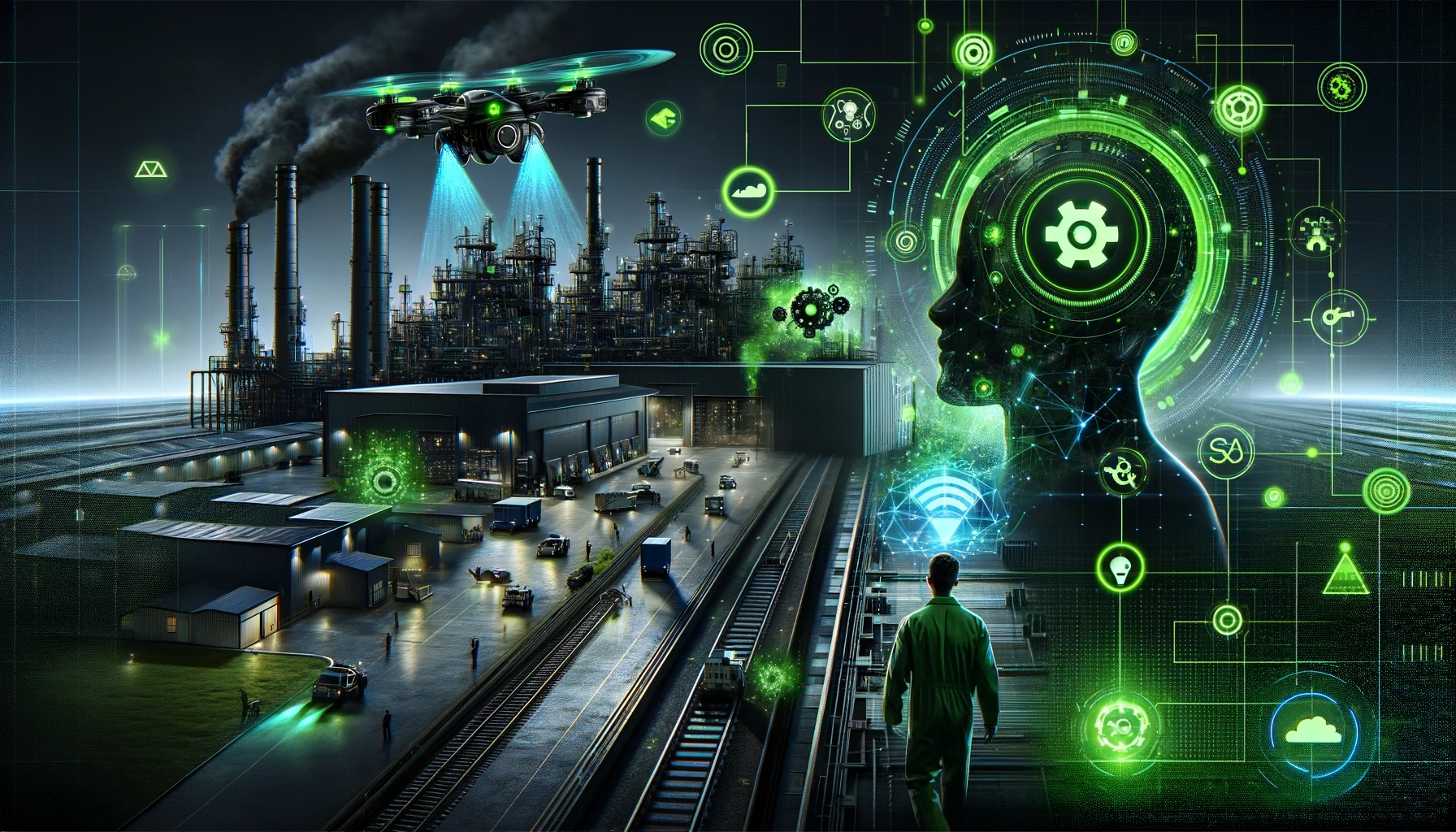AI in Predictive Maintenance: Reducing Downtime and Enhancing Reliability
The seamless functioning of machinery is critical to the heart of every industrial operation. The advent of Artificial Intelligence (AI) in predictive maintenance has revolutionized how industries manage their assets, ensuring reliability and minimizing downtime. This article delves into AI's transformative power in predictive maintenance, exploring its benefits, applications, and future prospects.
Understanding Predictive Maintenance
Predictive maintenance is a proactive approach that uses data analysis and AI to predict when equipment failures might occur, allowing for timely maintenance actions, unlike traditional maintenance methods, which are either reactive (fixing issues after they occur) or preventive (scheduled maintenance regardless of equipment condition), predictive maintenance leverages real-time data to optimize maintenance schedules and extend the lifespan of machinery.
Imagine your car has a smart doctor that constantly checks its health. This doctor uses various tools like a stethoscope (vibration sensors), a thermometer (temperature sensors), and even a blood test (oil analysis) to monitor the car’s condition in real-time. Instead of waiting for the car to break down or following a fixed check-up schedule, the smart doctor predicts when something might go wrong based on the data it collects.

For example, if the car’s engine starts making unusual noises or the temperature rises unexpectedly, the smart doctor can detect these early signs of trouble and suggest a visit to the mechanic before a major breakdown occurs. This way, the car stays in good shape, avoids unexpected failures, and saves money on repairs by addressing issues before they become serious problems.
In essence, predictive maintenance is like having a smart doctor for your equipment, constantly monitoring its health and predicting when maintenance is needed to keep everything running smoothly and efficiently.
The Role of AI in Predictive Maintenance
Key Components
- Data Collection and Preprocessing:
• Sensors: These devices collect real-time data on various parameters such as temperature, vibration, and pressure.
• Data Preprocessing: Raw data is cleaned, normalized, and prepared for analysis to ensure accuracy and reliability.
- AI Algorithms:
• Machine Learning (ML): ML algorithms analyze historical and real-time data to identify patterns and predict potential failures.
• Generative AI: This subset of AI creates new data sets and insights, enhancing the predictive capabilities of maintenance systems.
- Decision-Making Modules:
• These modules process AI-generated insights to recommend maintenance actions, schedule tasks, and trigger alerts.
- User Interface and Reporting:
• Data visualization tools and dashboards help maintenance teams understand complex data patterns and make informed decisions.

Benefits of AI-Powered Predictive Maintenance
• Reduced Downtime: By predicting and preventing equipment failures, AI minimizes unexpected interruptions, keeping productivity high.
• Extended Equipment Life: Regular, AI-driven maintenance ensures machinery operates at optimal conditions, significantly extending its lifespan.
• Improved Operational Efficiency: AI optimizes maintenance schedules based on actual equipment conditions, reducing unnecessary maintenance and freeing up resources.
• Cost Savings: Predictive maintenance reduces the costs associated with unplanned downtime, frequent repairs, and manual inspections.
The U.S. Air Force’s implementation of AI for aircraft predictive maintenance showcases the significant benefits of this technology. Key project highlights and results include:
• Time Reduction: Up to 85% reduction in time from aircraft data extraction to alert analysis.
• High Accuracy: 92% accuracy of alerts scored.
• Comprehensive Monitoring: Over 1000 components are actively monitored, with hundreds of failures successfully detected.
The project involved ingesting 5000 B-1B sorties with 75 billion rows of data for SBA model training, creating an extensible data model, and deploying a machine learning model pipeline that includes autoencoders, hierarchical models, transformers, and post-processors. This approach allowed for the rapid development and deployment of SBA models, improving the efficiency and effectiveness of predictive maintenance operations.
Applications of AI in Predictive Maintenance
Industrial Manufacturing
- Siemens provides state-of-the-art predictive maintenance services through their Senseye Predictive Maintenance platform. This service leverages advanced analytics and AI to monitor and predict the condition of industrial equipment. By anticipating failures before they occur, Siemens helps companies optimize their spare parts management and inventory, reducing downtime and maintenance costs.
- ABB offers the Ability™ Predictive Maintenance software, a cutting-edge solution that utilizes AI to predict equipment failures. This software enables organizations to increase productivity and reduce downtime by accurately forecasting when maintenance is needed. ABB’s technology ensures that equipment is always operating at peak efficiency.
Aviation Industry
- Lufthansa Technik has integrated AI-powered systems like Condition Analytics to enhance their predictive maintenance capabilities. By analyzing sensor data from various aircraft components, Lufthansa Technik can predict maintenance needs accurately, thereby increasing the reliability and safety of their fleet. This proactive approach minimizes unexpected failures and optimizes maintenance schedules.
- Airbus utilizes Skywise, a revolutionary cloud-based data system that collects real-time data from aircraft. This system allows Airbus to perform reliable and timely maintenance by predicting potential issues before they become critical. Skywise enhances the overall efficiency and safety of Airbus operations.

Implementing AI-Powered Predictive Maintenance
Implementing AI-powered predictive maintenance can seem complex, but breaking it down into simple steps makes it more approachable. Here’s a beginner-friendly guide to get you started:
- Data Integration
Collection: Start by gathering data from various sources. This includes sensors on the equipment that measure things like temperature and vibration, past maintenance records, and logs of how the equipment has been used.
Preprocessing: Clean the data to make sure it’s accurate. This means fixing any errors, filling in missing information, and making sure all the data is in the same format.
Integration: Combine the data from different sources into one place, like a database, so it’s easy to access and analyze.
- Algorithm Development
Feature Engineering: Identify key pieces of data that are important for predicting when equipment might fail. These are called features and might include things like the age of the equipment or how often it’s used.
Model Selection: Choose a type of machine learning model that’s good at making predictions. Simple models like linear regression can be a good starting point.
Training and Validation: Teach the model using historical data (this is called training), and then test it with different data to make sure it can make accurate predictions (this is called validation).
- System Deployment
Infrastructure Setup: Set up the necessary hardware and software. This might be on your computer, a server, or in the cloud, depending on how much data you have.
Integration with Existing Systems: Make sure the new system works well with your existing systems, like the software you use to manage maintenance tasks. This often involves setting up connections so the systems can share data.
User Interface and Alerts: Create a simple interface where users can see the predictions and get alerts if something might go wrong. This could be a dashboard on your computer or an app on your phone.
- Continuous Monitoring and Adaptation
Performance Monitoring: Keep an eye on how well the system is working. Check if the predictions are accurate and if there are any problems.
Feedback Loop: Allow users to provide feedback on the predictions. This helps improve the system and makes sure it’s useful.
Model Updating: Regularly update the model with new data to keep it accurate. Equipment and usage patterns can change over time, so the model needs to adapt.
Scalability and Expansion: As you get comfortable with the system, think about using it for more equipment or at different locations. This involves repeating the same steps and making sure the system can handle more data.

Conclusion
AI in predictive maintenance is transforming how industries manage their assets, offering a proactive approach that reduces downtime, extends equipment life, and enhances operational efficiency. By leveraging the power of AI, organizations can ensure the smooth functioning of their machinery, driving productivity and profitability in an increasingly competitive landscape.





